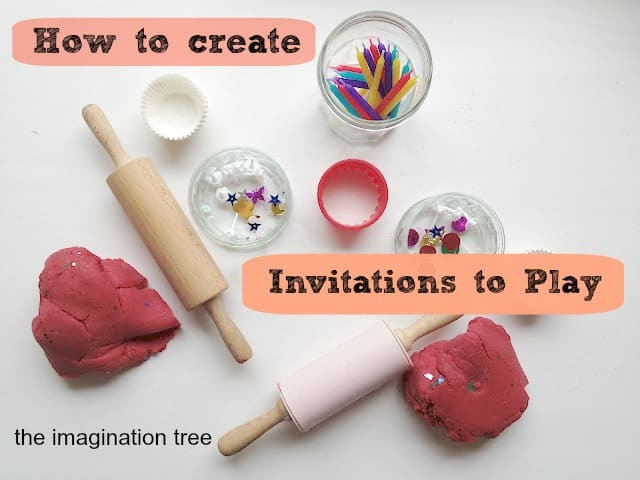Unlock the Magic of Play: Your Ultimate Guide to Crafting Irresistible Invitations to Play for Your Kids!
Hey there, awesome parents and guardians! Get ready to unleash a world of imagination, learning, and fun right in your very own home with “Invitations to Play”. Imagine creating a special playtime for your little ones that sparks their curiosity, encourages problem-solving, and delivers loads of giggles. Whether you’re a master of crafts or a newbie looking for some creative parenting hacks, this guide is your ticket to becoming the ultimate playtime champion!
What Are Invitations to Play?
An invitation to play is a delightful and engaging setup of toys, materials, and props that prompts your child to dive into a play experience that’s both fun and educational. Think of it as a playdate between your child and their imagination, facilitated by you. It’s not just about keeping the kiddos busy; it’s about offering opportunities for discovery and learning without a strict agenda. Now, let’s turn those ordinary afternoons into adventures with a few simple steps!
Benefits of Invitations to Play
Before we leap into the how-tos, let’s dig into some amazing benefits of crafting these playful scenarios:
- Creative Development: Invitations to play are perfect for nurturing creativity and allowing children the freedom to express themselves through play.
- Problem Solving: As kids engage with various scenarios, they learn to think critically and solve problems independently.
- Social Skills: Whether it’s a solo mission or a group endeavor, these play setups help children develop social and communication skills.
- Sensory Exploration: Using different textures, colors, and materials opens up a world of sensory experiences for young explorers.
- Emotional Growth: Play allows children to process emotions and experiences in a safe and guided environment.
Setting the Stage for Playful Success
Setting up an invitation to play doesn’t have to be complicated. With a touch of enthusiasm and some handy materials, you can transform any corner of your home into a hub of creativity. Here’s a sneak peek into the easy yet impactful steps we’ll cover:
- Choosing the Right Space: Find the perfect spot in your home that’s both safe and inviting.
- Gathering Materials: A mix of everyday items and special finds make for an engaging play setup.
- Theme Selection: Pick a theme that resonates with your child’s interests.
- Engaging All Senses: Add elements that will stimulate sight, sound, touch, and smell for an immersive experience.
- Safety First: Always ensure the play environment and materials are child-friendly and age-appropriate.
Ready to roll up your sleeves and create an unforgettable playtime? Fantastic! Keep reading to discover step-by-step instructions, pro tips, and theme ideas that will make your invitations to play the highlight of your child’s day.
Step 1: Choosing the Perfect Play Space
Finding the ideal spot for your invitations to play is crucial. It needs to be a designated area where your child feels comfortable and free to explore. This could be a portion of the living room, a playroom, or even a space in your child’s bedroom. Ensure the area is well-lit, preferably with natural light, and away from household hazards. This special nook will become synonymous with curiosity and joy—much like a mini laboratory for little learners!
Once you’ve got your designated play spot, it’s time to gather the treasures that will ignite your child’s imagination. I’ll let you in on some of the best-kept secrets to amassing a treasure trove of materials that don’t break the bank. Stay tuned for our next section, where we’ll dive into the wonderful world of materials! Let the playful learning begin!

5 Essential Tips for Parents Preparing Invitations to Play
As you embark on this joyful journey to construct an invitation to play, keep these five essential tips in mind. They will help you craft a play experience that captivates and educates your little ones, transforming playtime into a treasure trove of life skills.
1. Keep it Simple, Keep it Fun
Don’t get overwhelmed by the need to create an elaborate setup. Start with what you have at home, and let your creativity do the rest. A simple invitation can be just as effective as a complex one. Abandon the pressure to be perfect; it’s the fun, improvisational nature of play that kids love!
2. Follow Their Interests
Children are more likely to engage in play that aligns with their current fascinations. Tailor the theme and materials to what excites your child. Are they into dinosaurs, space, or fairy tales? Use these themes as a springboard for your invitations to play.
3. Promote Open-Ended Play
Choose materials and props that don’t dictate how they should be used. Items like blocks, clay, and natural materials encourage children to use their imagination and invent their own rules and stories.
4. Encourage Independence
Set out the invitation to play in a way that allows your child to get involved without much assistance. This fosters independence and gives you a chance to observe the incredible ways your child interacts with the world around them.
5. Safety and Accessibility
Ensure that the play area is secure, and all materials are non-toxic and suitable for your child’s age and abilities. Keep accessibility in mind; the play area should be easily approachable by your child so they can confidently explore and learn at their own pace.
Step-by-Step Guide to Creating a Play Invitation
The beauty of an invitation to play lies in its uniqueness to each child and each day. While there’s no one-size-fits-all approach, following these steps will give you a solid framework for creating a play experience that will open up a world of possibilities for your little one.
Step 1: Getting Inspired
Take a moment to observe your child. What makes their eyes light up? Start there. Browse through books, online resources, or think of activities that can be adapted to your child’s interests.
Step 2: Collecting Materials
Look around your house for everyday objects and pair them with a couple of special items that fit the chosen theme. Items from nature, like rocks, sticks, and leaves, can pair wonderfully with toys you already have. Remember, the mix of textures and colors is key to sensory play.
Step 3: The Setup
Arrange the materials invitingly. A little bit of order helps set the scene and entices your child to jump in. Consider grouping similar items together or setting a scene that immediately suggests play ideas.
Step 4: Time to Play!
Once everything is in place, invite your child to explore. Resist the urge to direct their play; instead, provide gentle prompts if needed and let their imagination guide them.
Step 5: Reflect and Adapt
After the play is over, take a moment to think about what worked and what didn’t. Perhaps certain materials went unused, or maybe a new interest has sparked. Use these observations to inform your next play invitation, making each one more exciting and engaging than the last. With each invitation to play, you’ll get to know your child’s learning style and interests better, and this will help you craft even more captivating play setups in the future.
Embrace the journey of creating invitations to play as an ongoing adventure. With each playful setup, you’ll witness the incredible growth and development in your child, all while making beautiful memories together. Enjoy every moment of play, laughter, and discovery!
See more great Things to Do with Kids in New Zealand here. For more information see here
Disclaimer
The articles available via our website provide general information only and we strongly urge readers to exercise caution and conduct their own thorough research and fact-checking. The information presented should not be taken as absolute truth, and, to the maximum extent permitted by law, we will not be held liable for any inaccuracies or errors in the content. It is essential for individuals to independently verify and validate the information before making any decisions or taking any actions based on the articles.




